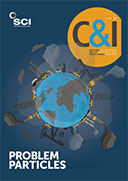Chemists need to be better communicators. They need to build a clearer business case that demonstrates the impact of their proposed research – in a language that investors can understand.
That was the view of Charles Kahle, former chief technology officer and vice president at paints & coatings manufacturer PPG Industries, speaking at the ACS meeting in Washington in August 2017.
‘Currently, science is outpacing the ability of the public to understand what we’re doing,’ Kahle said: ‘Technical jargon is a real issue in our sector. Modern technologies have become so complex and are built on so many layers of science that we need to work harder at explaining ourselves to stakeholders.’
Persuading investors to back the chemicals sector partly depends on convincing them that organic growth through R&D is a better investment than other mechanisms to drive total shareholder returns (TSR), Kahle continued, which is the appreciation in the stock price plus dividends paid out to shareholders. But with an average TSR of 9.5% for the chemicals sector – below the 12% median of all other industrial segments – that’s a hard sell, he pointed out.
M&A activity in the sector, meanwhile, is another route to unlocking shareholder value and freeing up much needed funds for R&D and innovation. Recent large M&As involving Dow and DuPont, ChemChina and Syngenta and Bayer and Monsanto, among others, will release an estimated $7.4bn once the deals are finalised, Kahle continued, largely as a result of synergies in operations and the consequent downsizing of plants and restructuring of business operations.
Innovation is the key for future growth, he believes, with 60% of all new substances in the Chemical Abstracts Service (CAS) currently arising from patents. The pace of patentable inventions has accelerated in recent years, while since 2008, non-US applicants have accounted for more than half of all patents. China, in particular, is seeing a huge surge in innovation capacity, he said.
The business of chemistry, however, is not cheap. In 2015, Kale noted that the US chemicals industry spent $93bn on R&D, with 87% of that investment from the pharma sector. The average cost of developing a new drug currently stands at around $2.6bn, while a new petrochemicals cracker can cost between $2 and $10bn, he said.
As regards the opportunities for innovation, there has ‘never been a better time to be a chemist,’ Kahle believes. He listed energy, genetic engineering, artificial intelligence – and crucially sustainability – as central to some of the big ideas for the future. ‘Products need to become simpler to manufacture and use, with fewer side effects,’ he said.
However, the road to commercialisation is ‘filled with potholes’ and he urged bench chemists to get more involved in building a better business case for further investment. ‘We are all in sales,’ he said, adding that in his view: ‘Chemists across the globe have become more risk averse and scientific discovery more incremental’. While he doesn’t advocate overselling an idea, Kahle said business people needed to be better informed about the impacts of scientific discovery in order to invest.
He likened the current gulf in understanding between many chemists and business investors to that of someone speaking a different language. Bench chemists should be an integral part of the business and become better translators to explain the science and its value to the public and stakeholders.
To understand this division between the needs of individual chemists and industry, Kahle has composed a pair of contrasting Haikus – or Japanese poems of three lines and 17 syllables – to explain the different drivers and motivations both for the individual chemist and the chemical company.
|
A few salient industry facts and figures
|





